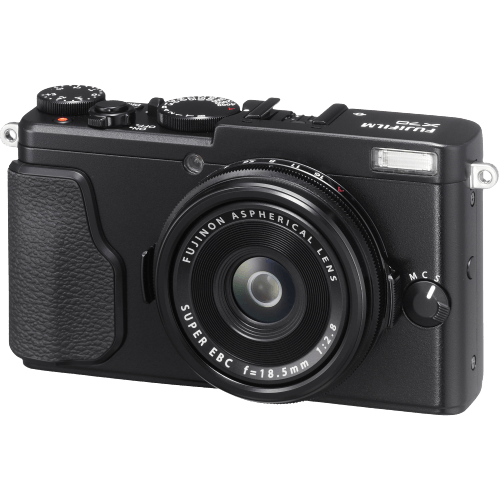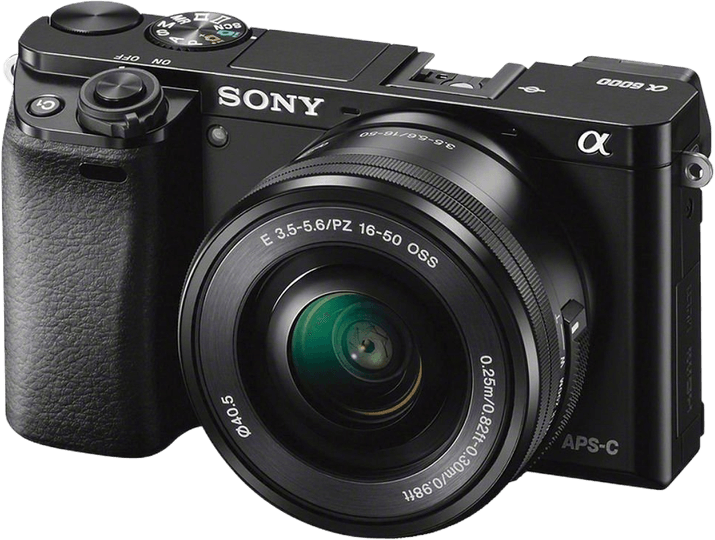Fujifilm X70 vs Sony a6000 Comparison
Fujifilm X70

Sony a6000

The Sony a6000 comes out on top with a score of 57/100, while the Fujifilm X70 lags behind with 53/100. Both cameras share similarities, such as their $799 launch price and comparable camera size and weight. The Fujifilm X70, a compact camera, measures 113 x 64 x 44mm and weighs 340g. The Sony a6000, a mirrorless camera, has dimensions of 120 x 67 x 45mm and weighs 344g.
The Sony a6000 excels due to its mirrorless technology, providing better image quality and performance. However, the Fujifilm X70 has its merits as a compact camera, offering convenience and portability. As we compare these two cameras, the Sony a6000 stands out as the better choice with its higher score, while the Fujifilm X70 remains a suitable option for those prioritizing compactness.
Fujifilm X70 vs Sony a6000 Overview and Optics
The Sony a6000 outperforms the Fujifilm X70 in optics, with a score of 67/100 compared to the X70’s 54/100. Both cameras share some similar specifications, such as having a CMOS sensor, APS-C sensor size, and no image stabilization. However, the differences in megapixels, shooting speed, processor, and lens mount contribute to the Sony a6000’s higher score.
The Sony a6000 has a higher megapixel count at 24.3, compared to the Fujifilm X70’s 16 megapixels. This results in better image resolution and detail. Additionally, the a6000 boasts a faster shooting speed of 11 frames per second (fps), compared to the X70’s 8 fps, allowing for better capture of fast-moving subjects. The a6000 also features a more advanced processor, the Bionz X, which contributes to its superior image quality and performance.
Another advantage of the Sony a6000 is its interchangeable lens mount, the Sony E mount. This allows users to choose from a wide variety of lenses to achieve different effects and styles. In contrast, the Fujifilm X70 has a fixed lens mount, limiting its versatility.
However, the Fujifilm X70 does have an advantage in its compact size due to the fixed lens mount. This makes it more portable and easier to carry for everyday use or travel. The Sony a6000, with its interchangeable lens system, might be bulkier and heavier depending on the lens used.
Taking these factors into account, the Sony a6000 is the superior choice for those seeking higher image quality, faster shooting speed, and greater versatility with lens options. The Fujifilm X70, on the other hand, may be a better choice for those prioritizing compactness and portability.
Fujifilm X70 vs Sony a6000 Video Performance
The Fujifilm X70 outperforms the Sony a6000 in video capabilities with a score of 70/100, compared to the Sony a6000’s 56/100. Both cameras share some common specifications, such as Full HD maximum video resolution and 1920 x 1080 maximum video dimensions. Additionally, both can reach a maximum video frame rate of 60fps.
The Fujifilm X70 surpasses the Sony a6000 in video performance due to its built-in time-lapse functionality. This feature allows users to create stunning time-lapse videos without the need for additional software or equipment. The inclusion of this functionality in the X70 contributes to its higher video score and makes it a more versatile option for videographers.
While the Sony a6000 does not offer built-in time-lapse functionality, it still provides quality video performance with its Full HD resolution, 1920 x 1080 dimensions, and 60fps frame rate. However, users seeking time-lapse capabilities will need to invest in external equipment or software to achieve this effect.
Comparing the video capabilities of these two cameras, the Fujifilm X70 is the clear winner due to its built-in time-lapse feature, which adds versatility and value for videographers. The Sony a6000 still provides solid video performance, but the lack of time-lapse functionality limits its appeal for those seeking a more comprehensive video toolset.
Fujifilm X70 vs Sony a6000 Features and Benefits
The Fujifilm X70 emerges as the winner in the features category with a score of 57/100, outperforming the Sony a6000 with its score of 41/100. Both cameras share several common specifications, such as a 3-inch screen size, flip screen, absence of GPS, and the presence of WiFi connectivity. However, there are key differences that set the Fujifilm X70 apart and contribute to its higher score.
One significant advantage of the Fujifilm X70 is its touchscreen capability, which the Sony a6000 lacks. This feature allows users to navigate menus and settings more quickly and intuitively. Additionally, the X70 boasts a higher screen resolution of 1,040,000 dots compared to the a6000’s 921,600 dots, providing a clearer and more detailed display.
Despite its lower feature score, the Sony a6000 does have one advantage over the Fujifilm X70: it offers an electronic viewfinder. This can be beneficial for photographers who prefer composing their shots using a viewfinder rather than the camera’s screen. The Fujifilm X70, on the other hand, does not have a viewfinder.
Taking these points into consideration, the Fujifilm X70 stands out as the better camera in terms of features, primarily due to its touchscreen functionality and superior screen resolution. The Sony a6000, although falling short in these areas, may still appeal to photographers who value the presence of an electronic viewfinder.
Fujifilm X70 vs Sony a6000 Storage and Battery
The Fujifilm X70 and Sony a6000 both score 21/100 in storage and battery. They share similarities in this category, such as having one memory card slot and accepting SD/SDHC/SDXC memory cards. Neither camera offers USB charging.
The Sony a6000 has a slight advantage in battery life, providing 360 shots compared to the Fujifilm X70’s 330 shots. Additionally, the a6000 accepts Memory Stick Pro Duo/Pro-HG Duo cards, giving users more storage options. The Fujifilm X70, however, does not have any distinct advantages in this category.
Considering these factors, the Sony a6000 is a better choice for users who prioritize longer battery life and more storage options. The Fujifilm X70 remains a viable option for those who find other features more important and are satisfied with its storage and battery capabilities.
Fujifilm X70 vs Sony a6000 – Our Verdict
Are you still undecided about which camera is right for you? Have a look at these popular comparisons that feature the Fujifilm X70 or the Sony a6000:

